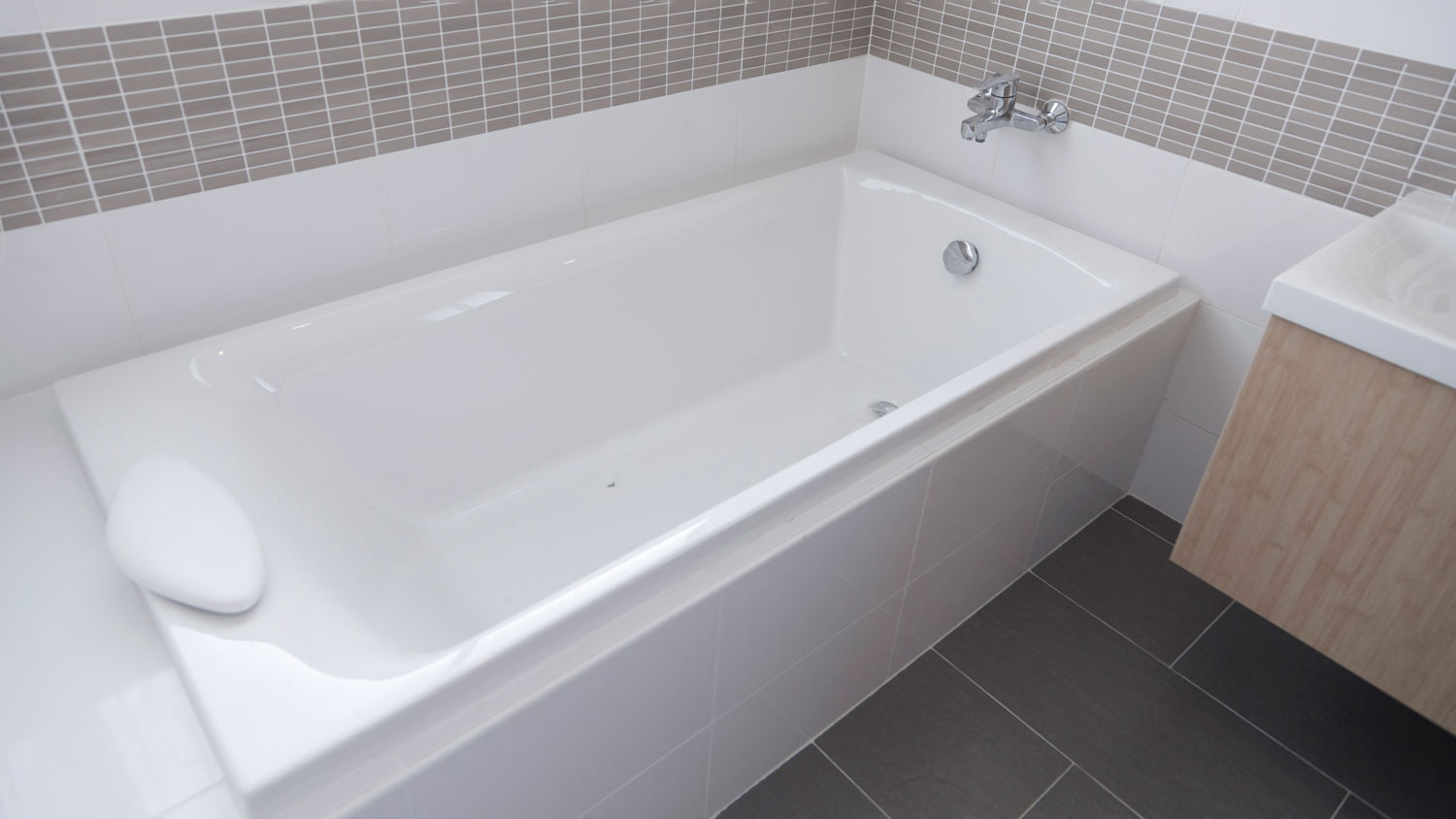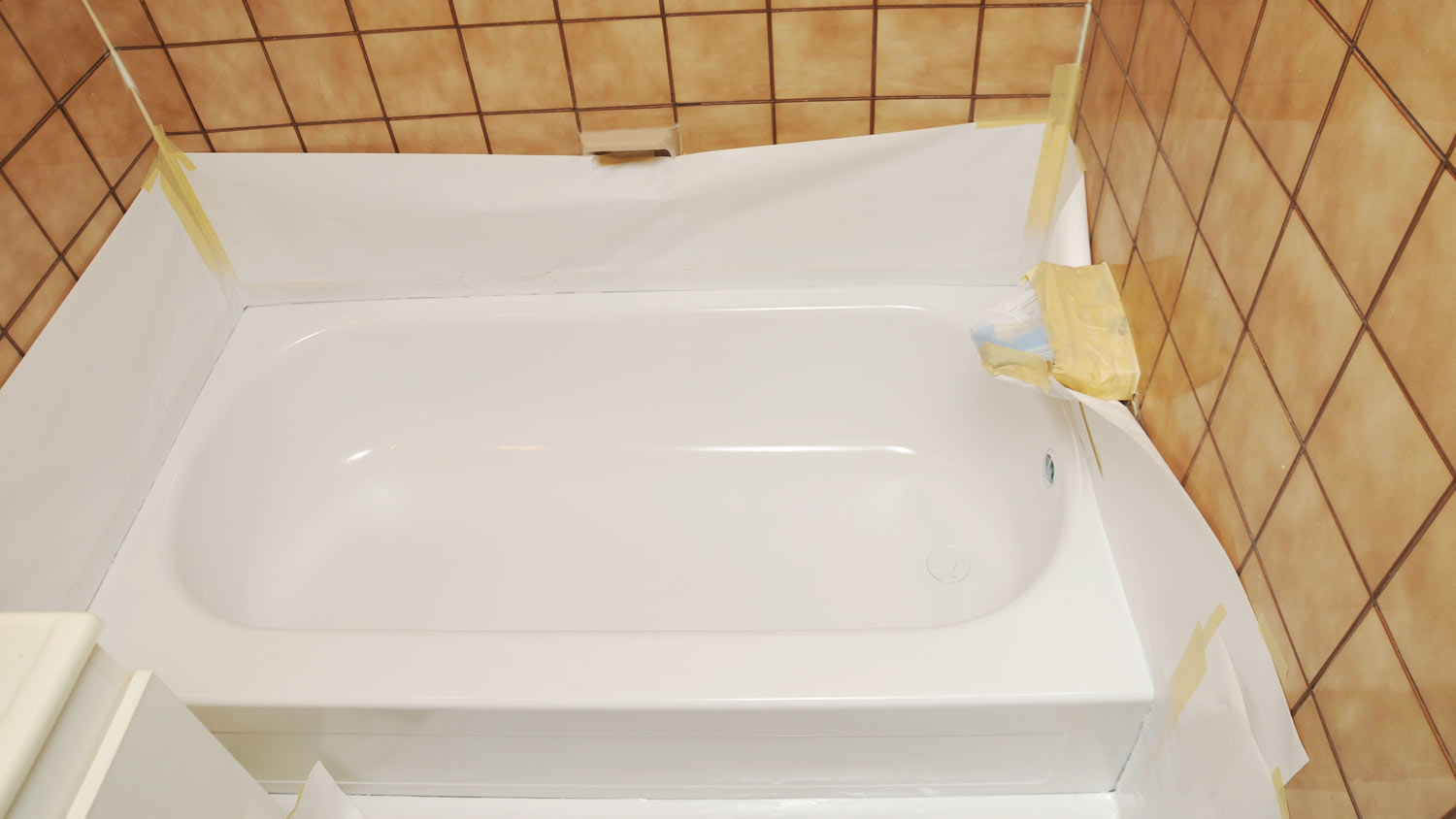
Shower pan replacement costs $530 to $2,700. Find out how material, shower size, labor, and more affect the final project budget.
Reclaim and retain your bathtub’s shine


Bathtub reglazing transforms a worn-out tub from dull to dazzling, but how long does it last before it needs a refresh? Let’s explore the details of tub reglazing, including factors that impact longevity, tips for protecting your tub’s finish, whether repairing or replacing reglazing is best, and more.
With proper care, quality bathtub reglazing lasts 10 to 15 years. However, the lifespan of your bathtub glazing depends on several factors, which we’ll discuss in depth below.
First, it’s important to understand that bathtub refinishing and reglazing are related but different services. Bathtub refinishing is restoring a tub (including repairing imperfections and cracks, resurfacing, and reglazing), but bathtub reglazing is the final step in the refinishing process. It can also be a stand-alone answer for tubs in good condition other than their shine wearing a little thin.
Bathtub refinishing contractors near you can help with bathtub facelifts or suggest other options, like bathtub liners.

The longevity of bathtub reglazing depends on more than just the reglazing itself. The quality of the work, bathroom conditions, and bathtub care all influence how long the finish holds up. Here’s a closer look at what makes or breaks bathtub reglazing.
The quality of the reglazing is one of the biggest predictors of its longevity. Professional tub refinishers often use higher-quality materials and techniques, so their work usually lasts longer than DIY reglazing.
Humidity, poor water quality, and exposure to soap scum and grime make bathtub reglazing less durable. Environmental conditions during reglazing also influence longevity and how well the new finish adheres to the tub.
The more often you use your tub, the shorter the life of the reglazing. Daily wear and tear dulls and damages reglazing by exposing it to water, soaps, oils, body scrubs, and other products that degrade the shiny finish over time. Friction from cleaning and bathing creates microabrasions that gradually wear down the glossy coating. Standing or sitting in the tub also weakens the bond between the reglazing and the bathtub surface, leading to chips, cracks, and peeling.
Scrub smart to keep the shine alive. Regular and careful maintenance, like cleaning with non-abrasive cleansers and cloths and avoiding harsh chemicals, preserves the finish. Frequent, gentle cleaning also removes soap scum, oils, and surface grime that wears down and dulls the reglazing.
We can’t glaze over the facts about bathtub finishes—even the best reglazing doesn’t last forever. Here are some signs that it’s time to glaze again:
Visible chips and cracks
Discoloration like yellowing or fading
Rough texture
Water pooling under the reglazing
Keep your bathtub looking shiny and new with a little TLC. From cleaning tips to smart precautions, these easy steps help keep your tub looking polished and pristine.
Avoid abrasive cleansers and harsh scrubbing pads.
Don’t put excessive pressure on the tub surface, especially if the reglazing is relatively new. Never store heavy items in a bathtub or on the edges.
Clean your bathtub regularly to prevent soap scum, mildew, and grime from building up and wearing down reglazing.
Use a non-slip bathtub mat to protect the tub bottom from scratches and keep you safer.
Many bathtub reglazing pros offer warranties against peeling, cracking, and discoloration. Depending on the company and the type of service, warranties typically last up to five years. If your contractor offers one, it’s wise to get it in writing.
Here are our top tips for navigating warranties.
Check the warranty coverage: Warranties are only as good as their coverage limits, so make sure yours covers common issues like cracks, chips, and fading. Verify whether the warranty ends on a specific date or is prorated (meaning it declines in value over time) and whether it covers material and labor.
Understand terms and conditions: Most warranties have conditions. For example, some become void if you use the wrong cleaning method or use the tub too often. Understanding the terms helps you care for your reglazing and protect your warranty coverage.
Decide if it’s worth paying for: If your contractor offers free warranties, you're good to go. But if you have to pay extra for warranty coverage, you’ll need to decide if it’s worth it. Consider the cost of reglazing, the condition of your bathtub, and how likely you are to need repairs. If you’re hiring a pro and your bathtub is in good shape, an affordable warranty might give you peace of mind.

The question is whether to repair or replace. If your bathtub has minor chips, cracks, or stains but most of the surface is in good condition, a repair may be the most cost-effective and efficient option. Reglazing pros can touch up or repair small areas without replacing all of the reglazing.
However, if the reglazed surface is severely damaged or peeling, or the finish is worn over large areas, it’s time for a full reglazing replacement. In some cases, especially if the tub is in bad shape or you’re planning a bathroom remodel, replacing the entire bathtub might be more cost-effective in the long run.
From average costs to expert advice, get all the answers you need to get your job done.

Shower pan replacement costs $530 to $2,700. Find out how material, shower size, labor, and more affect the final project budget.

Building a guest house is one of the largest home projects and involves several different professionals. Learn about the cost to build a guest house and where you can save.

Remodeling your bathroom can add significant value to your home. Your bathroom remodel cost in Columbus, OH will depend on size, fixtures, materials, labor, and other factors.

When comparing a steam shower versus a sauna, some factors can impact which one is best for you, including installation, temperature, treatment, and cost.

An updated bathtub can give a bathroom a whole new look. Find out how much it costs to replace a bathtub in Boston, MA, including prices by type and labor costs.

Discover the average walk-in bathtub installation cost, key price factors, and ways to save. Get expert tips to plan your walk-in tub project with confidence.